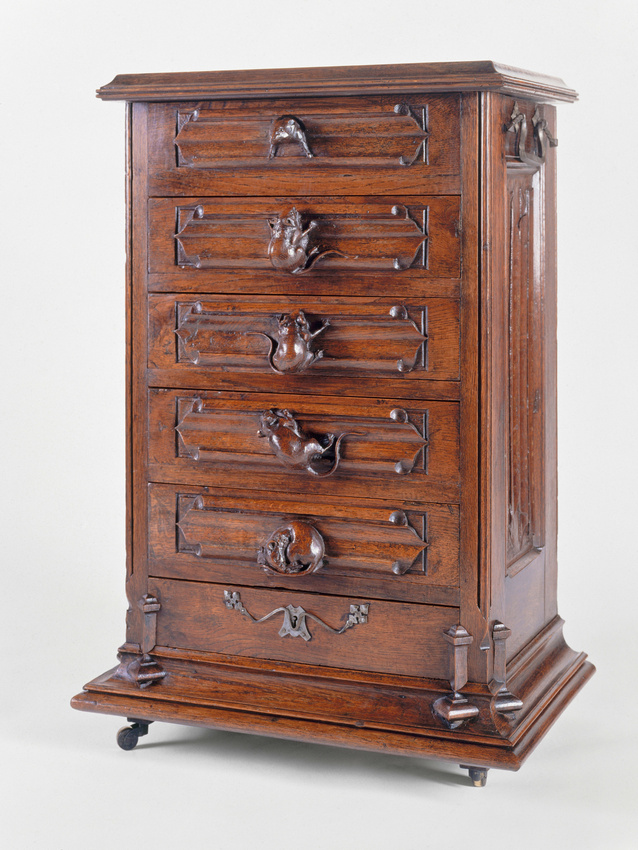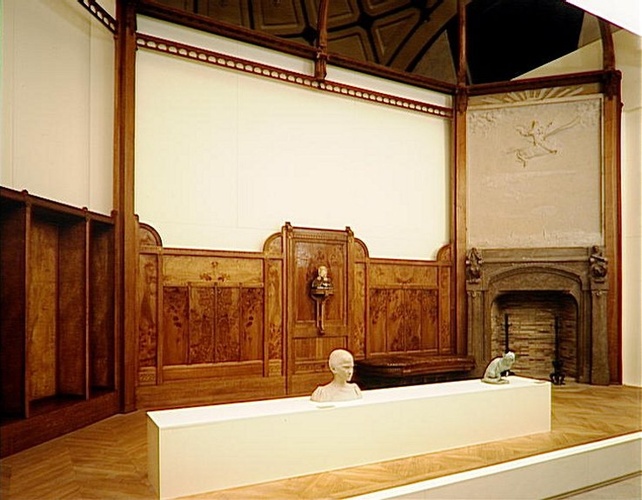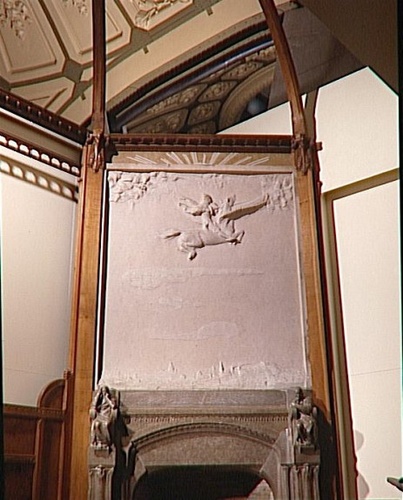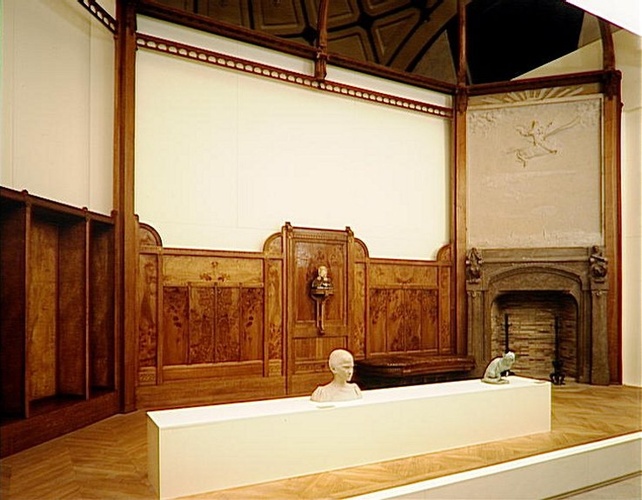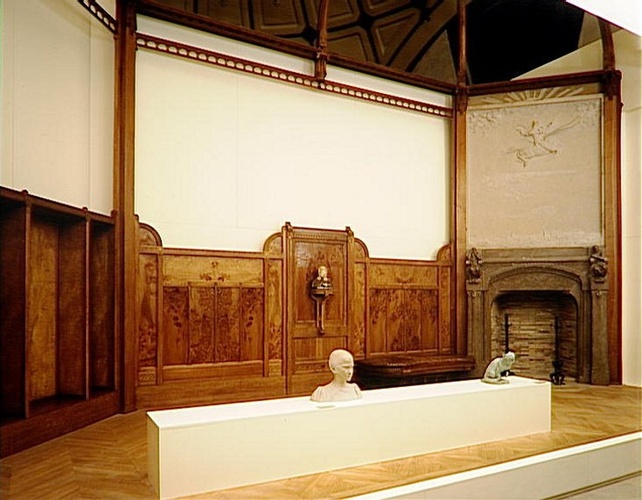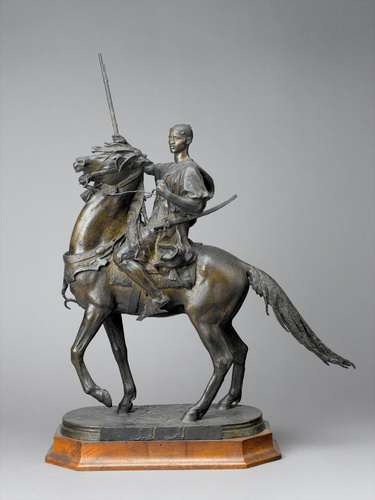Chiffonnier
This piece of furniture may well have been one of the first attempts, if not the first, at producing furniture by Jean Dampt, a sculptor by training. As a joiner, he followed in a tradition of two other sculptors who were also friends: François-Rupert Carabin (1862-1932) and Alexandre Charpentier (1856-1909).
This piece is simply constructed: oak panels assembled and fitted with drawers. Its practical nature is underlined by placing it on castors. The only ornamentation is in the wrought-iron handles and of course the carved sculpture. But what makes this object interesting above all else, is that it seems to have come straight out of the famous Dictionnaire raisonné du mobilier français by Eugène Viollet-le-Duc (1814-1879), a work that Dampt must have known, being familiar with the medieval heritage of his native Burgundy.
Without doubt, this piece is striking for its neo-Gothic character, with the omnipresent motif of linenfold, common on secular and religious furniture of the 15th century. Here, this motif is handled quite roughly on the front of the drawers, and, more delicately, in light relief, on the side panels. A close examination reveals that these side panels are much older than the other parts. So, we can surmise that Dampt was happy to take parts from authentic Gothic doors or cupboards for his piece.
As for the carved mice, the handles on the drawers, these are the most attractive part of the whole thing. The naturalism of their various attitudes and activities – curiosity, fear, nibbling, grooming and sleeping – is reminiscent of a medieval bestiary. However, the impact of Japanese art, where images of these small rodents were reproduced to an astonishing degree, should not be underestimated.
